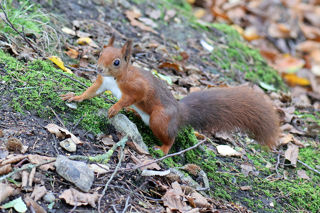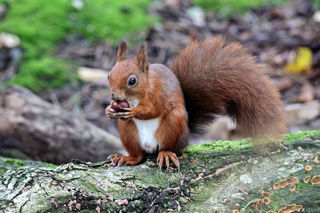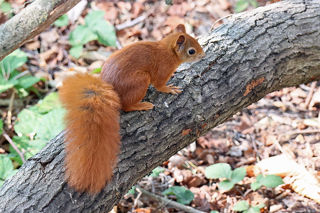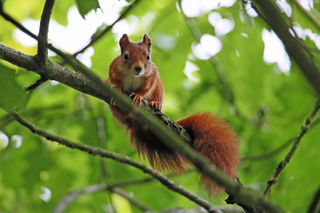
Conservation spotlight - Red Squirrel
23rd Dec 2020
Species: Red Squirrel
Looks
Characteristic red coat. Long bushy tail and ear tufts. Can be black, brown or white as well. Is smaller than the invasive grey squirrel. An adult weighs roughly 300 g.
Habitat (living spaces)
Found in all kinds of forests, but prefers coniferous ones. They are mainly vegetarian, but can take young birds and eggs too.
The red squirrel is widespread within Europe, except in the UK.
Status in the UK
The red squirrel is more or less extinct in the South and the UK strongholds are currently Northern England, Scotland and Ireland. The presence of the invasive American grey squirrel is a big threat to the red squirrel.
The abundant greys compete with the reds for food sources, but they also carry a squirrel pox virus which is deadly for the reds.
Habitat loss and fragmentation, as with most of our endangered wildlife, is also a threat that limits the range of the red squirrel.
The red squirrel is considered endangered in England and Wales and near threatened in Scotland in the IUCN list*.
Importance for nature
Red squirrels help spread seeds and fungi, in particular in our coniferous forests. As they have specialised in feeding on cone seeds, these are spread in a natural way through the red squirrel’s eating habits. They also help spread fungi spores which are important for the survival of the trees that squirrels live in. Finally the red squirrel plays its part in the food chain as prey.
Wildwood’s work
Since 2002, Wildwood has bred an average of 6 red squirrels each year which have contributed to reintroductions in Wales; Anglesey Island, Gwynedd and Clocaenog Forest. We will continue to expand our work with red squirrels and share our knowledge and experience with other wildlife organisations working towards the same goal of seeing more red squirrels in the wild, all around the UK.
* The IUCN red list is an indicator list showing the conservation status of most wildlife on earth. Species can be classified as Least Concern (LC), Near Threatened (NT), Vulnerable (VU), Endangered (EN), Critically Endangered (CR), Extinct In The Wild (EW), Extinct (EX)




